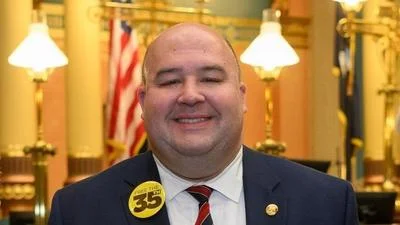Sandy K. Baruah President and Chief Executive Officer at Detroit Regional Chamber | Official website
Sandy K. Baruah President and Chief Executive Officer at Detroit Regional Chamber | Official website
On August 7, Old National Bank’s Chief Economist Matt Finn and Senior Vice President of Interest Rate Risk Management Tom Plodzeen hosted a webinar discussing current economic indicators and other pressing issues for business owners across the Detroit Region.
Addressing concerns about a potential recession, Old National Bank indicated that such an outcome is unlikely. The rise in payrolls fell short of expectations, with an increase of 114,000 jobs compared to the anticipated 175,000. Concurrently, the U.S. unemployment rate climbed to a three-year high of 4.3%, while average hourly earnings increased by 0.2%, leading to a decline in year-over-year earnings growth to 3.6%.
Finn noted that the rise in unemployment is due to an expansion of the labor force rather than job losses, unlike previous cycles. He added that recent hurricanes have primarily impacted payroll figures and work hours, while job openings have remained steady.
“We got a lot of people retiring, so you have to replace those jobs first before you gain more employment,” Finn said. “Even with the July number, which is a little weaker, we’ve seen [the employment numbers] stabilize.”
Most measures of wage growth align with the Federal Reserve’s 2% inflation target; however, the rise in unemployment over the past year has primarily affected those with lower educational attainment. Plodzeen expressed optimism about these trends and suggested that they might lead the Federal Reserve to consider slightly lower rates without causing recession concerns.
“We’ve had a red-hot employment picture, and now we have it cool – which is what the Fed wanted,” Plodzeen said. “By having it cool down, it would help inflation. Over the last four months, it has been tracking under 2,000. Employment seems to be trending in a way where the Fed would want to bring down rates.”
In June, the "inflation gap" between consumer prices and cumulative changes in weekly wages narrowed to 4.3%, signaling good news for consumers who had faced stalled spending earlier this year as inflation outpaced income growth.
“The 4.3% gap is the pain of what [consumers] are feeling,” Finn said. “Their wages are not keeping up with the accumulative growth of prices. The take-home pay is not buying as much as it used to.”
Looking ahead to the next decade, Old National Bank predicts three significant themes will shape economic conditions: shifts in consumer spending due to an aging population requiring elder care; advancements in artificial intelligence and robotics poised to revolutionize productivity; and rising debt and deficits likely constraining economic growth as borrowing costs increase.
“This is a big shift in our way of thinking,” Finn said. “It’s not like when the internet and e-commerce began to launch. That took a decade to unfold; we think AI is going to do the same thing.”





 Alerts Sign-up
Alerts Sign-up